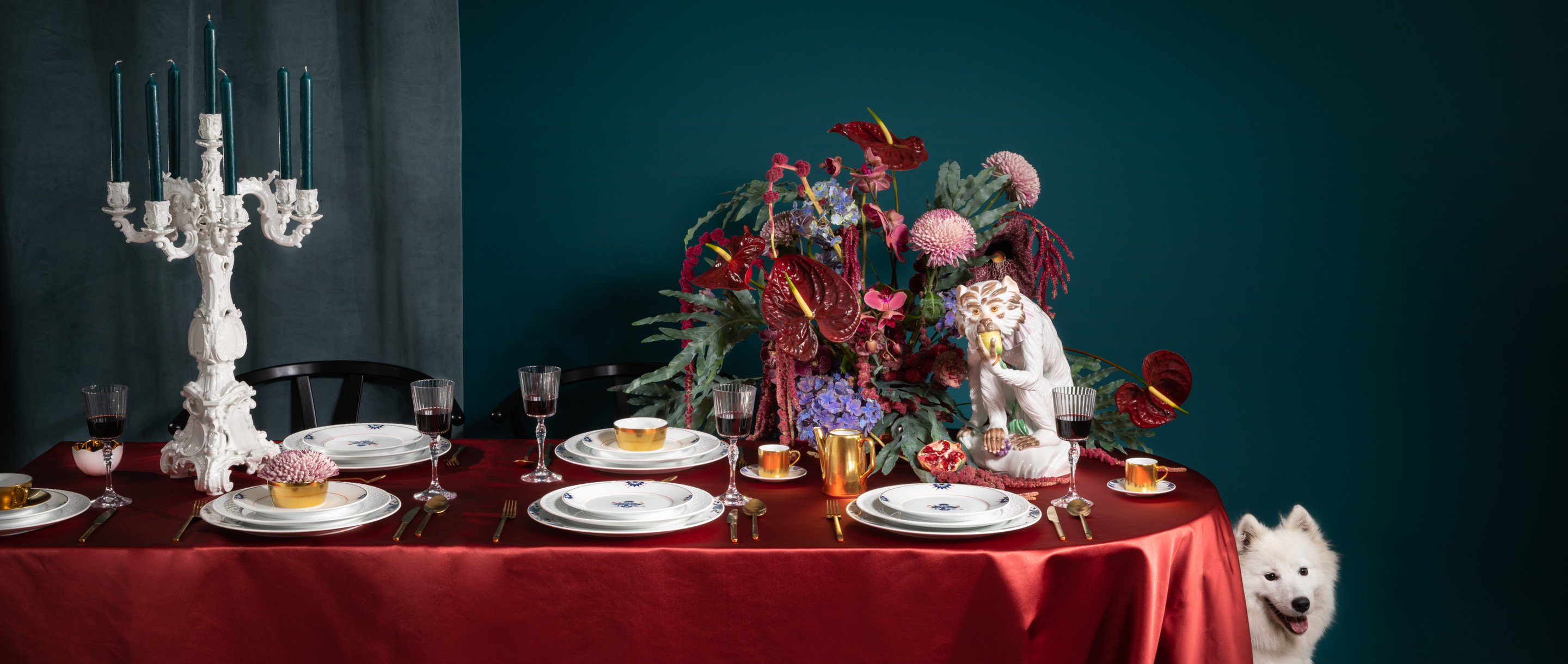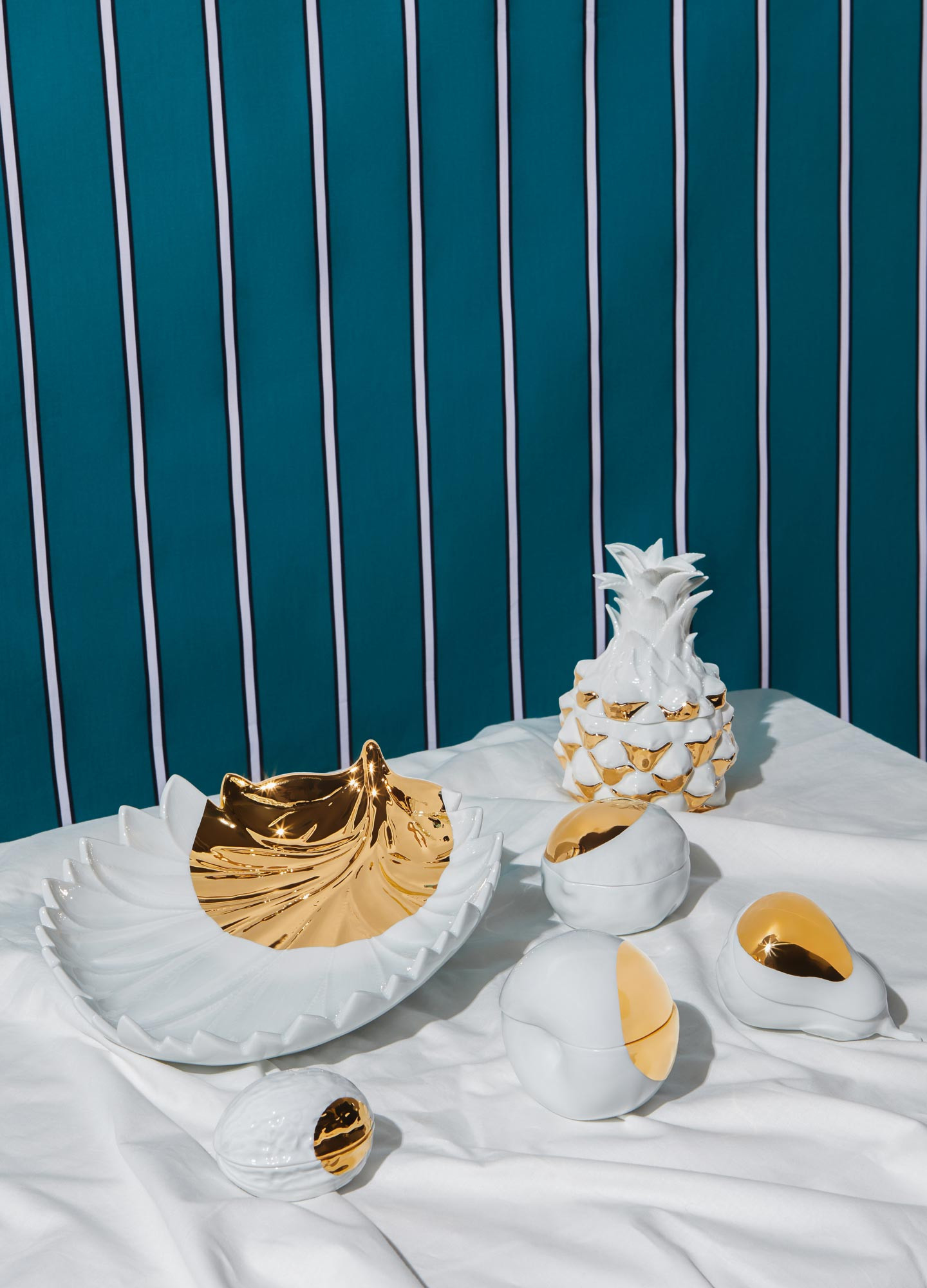While going through the Meissen manufactory archives, Otto Drögsler was struck by a series of Baroque boxes in the form of exotic fruits. Created in the 18th century, the porcelain boxes were part of an elaborate table setting that was intended to demonstrate the wealth and worldliness of the owner, as tropical fruits were considered the height of luxury at this time. As part of the “Orangery” collection, Drögsler has put a modern twist on the original Baroque designs and added two new finishes to the historic, naturalistic decorative pieces: monochrome and glossy gold.
In their naturalistic style, decoration elements merge harmoniously with the highly detailed design of the exterior, its sculpted elements highlighted by the skilled porcelain painters at the manufactory. Conversely, the eye-catching gold gilding boldly arranged on the all-white background lends these historic designs a modern feel and elevate them to works of art. For the monochrome finish – a novelty amongst Meissen’s decorative collections – each box is sprayed by hand in order to achieve an even, matte finish. The objects in the collection are designed so that they can be displayed as a coherent group, as individual pieces, or mix and matched between decorative styles. With his modern reinterpretation of a classic Meissen creation, Otto Drögsler brings Baroque into the 21st century in order to produce timeless interior décor.

